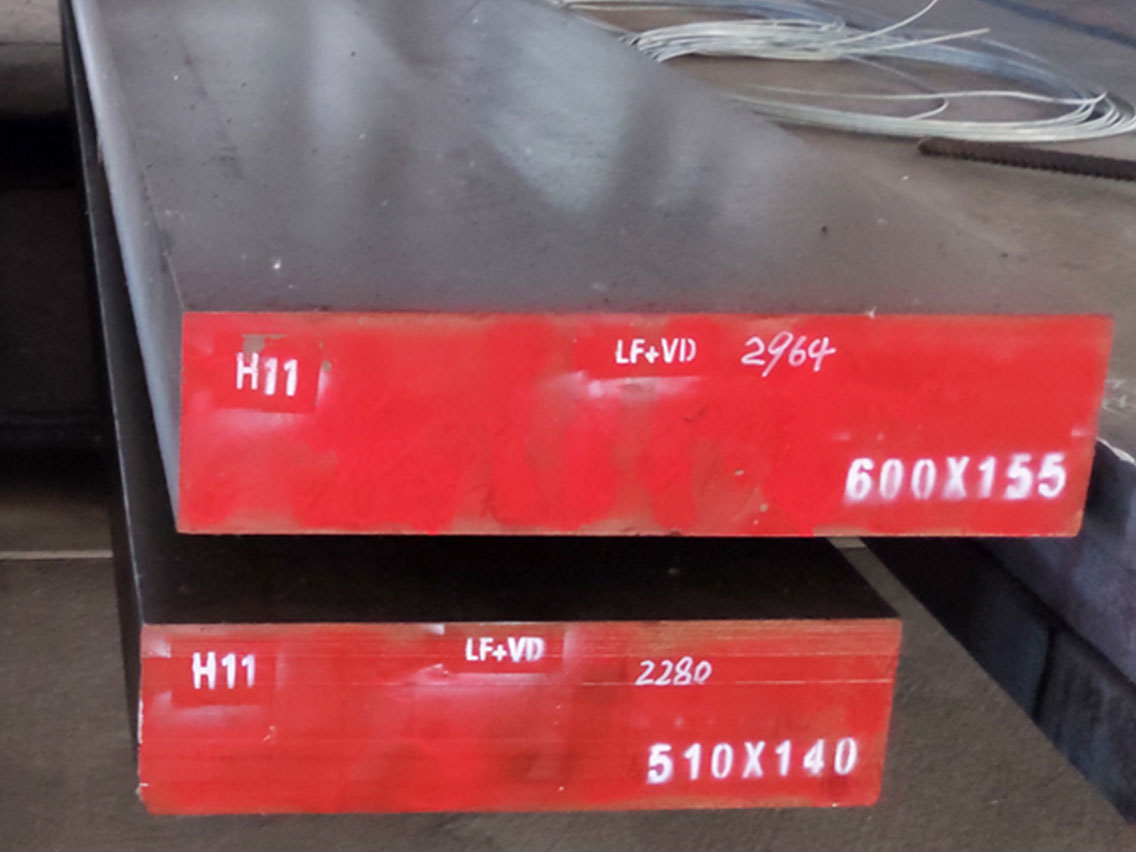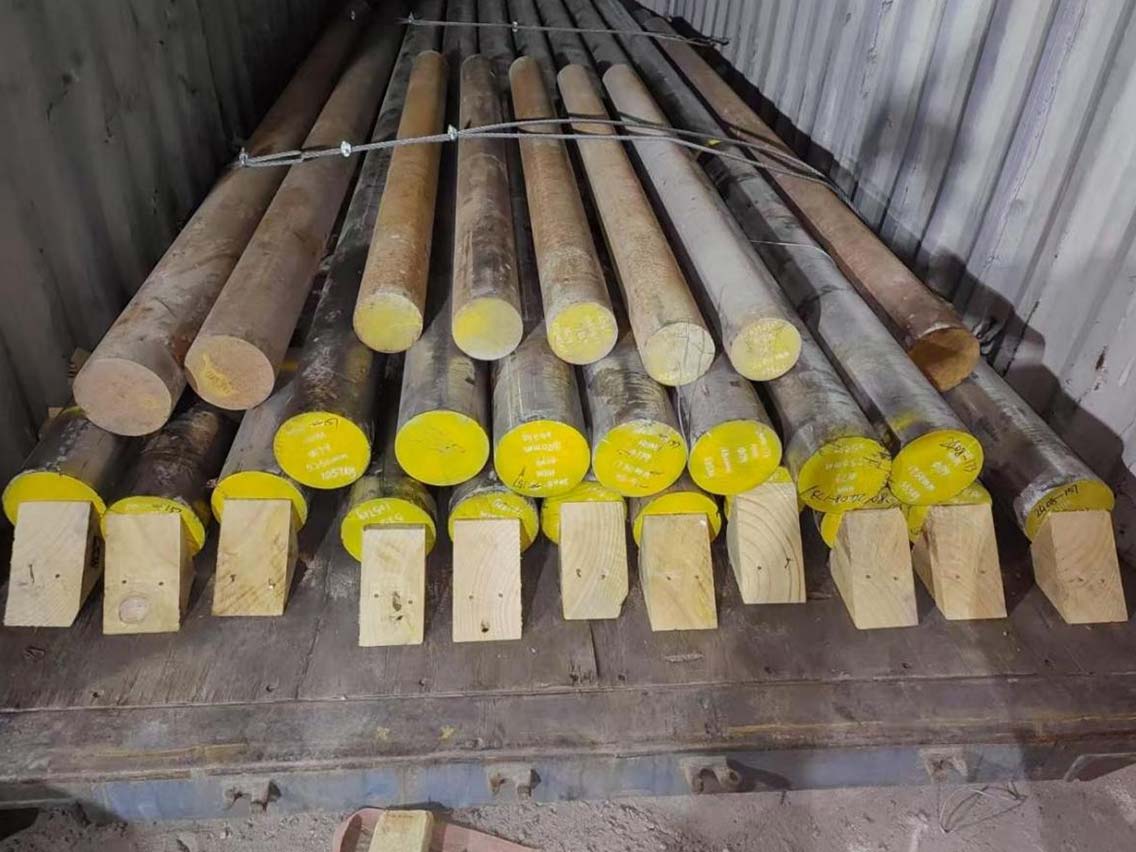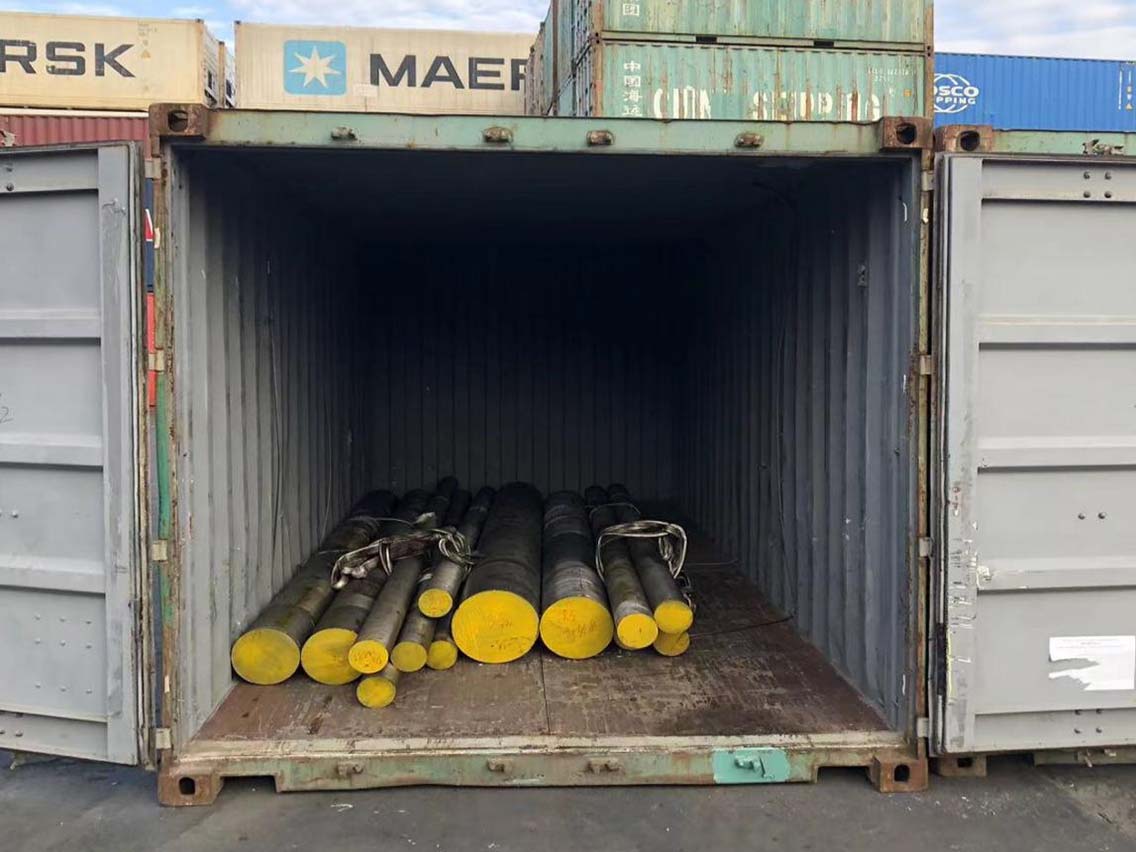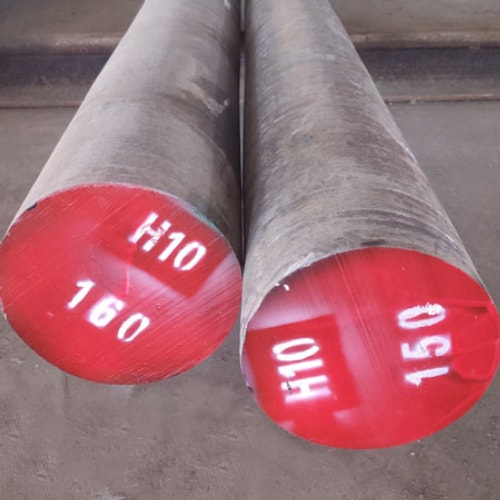H11/1.2343 Steel
H11/1.2343 Steel
H11/1.2343 steel is a high-alloy hot-work die steel known for its excellent hardenability, wear resistance, and thermal fatigue resistance. It is primarily composed of elements such as chromium and molybdenum. After undergoing quenching and tempering processes, it achieves high hardness and good toughness. This steel grade is widely used in die-casting molds, extrusion molds, and hot-forming molds for metals such as aluminum and copper. It is particularly suitable for manufacturing mold components that withstand high stresses and temperatures.
Product Parameter Table
Chemical composition :
|
C |
Si |
Mn |
P |
S |
Cr |
V |
Mo |
|
0.35-0.45 |
0.80-1.25 |
0.20-0.60 |
≤0.03 |
≤0.03 |
4.75-5.50 |
0.30-0.60 |
1.10-1.60 |
Mechanical properties :
|
Hardness,HRC |
45 |
46.5 |
48.5 |
|
Tensile strength,Mpa |
1450 |
1580 |
1680 |
|
Yield strength Rp 0.2,Mpa |
1240 |
1340 |
1410 |
|
Elongation A5 ,% |
13 |
13 |
12 |
|
Reduction in area Z,% |
65 |
65 |
64 |
H11/1.2343 steel is widely used in mold manufacturing, particularly in applications requiring high temperature and stress resistance.
Application
1. Die-casting molds: Suitable for die-casting of metals such as aluminum alloy and zinc alloy, ensuring that the mold maintains stable shape and size under high temperature and pressure.
2. Plastic injection molds: Used for producing various types of plastic products, such as household appliance shells and automotive parts, meeting the demands of high-temperature injection molding processes.
3. Hot-working molds: Such as hot extrusion, hot stamping, and hot forging molds, capable of enduring high temperatures and stresses, thereby extending the service life of the molds.
4. Tool manufacturing: Suitable for making molds for extruding light metal alloys, hot pressing molds, etc., fulfilling the requirements for high hardness and wear resistance.
5. H11/1.2343 steel is also suitable for manufacturing components that require high heat resistance and thermal fatigue resistance, as well as mold components that endure high stresses and temperatures.
Customer Testimonials
Excellent Heat Resistance and Toughness
“We’ve been using H11 (1.2343) steel for high-temperature applications, and it holds up incredibly well. Its toughness and heat resistance make it ideal for die-casting and forging tools.”
Superior Wear Resistance
“H11 steel offers outstanding wear resistance, which extends the lifespan of our tooling. Even under extreme working conditions, it maintains its strength and integrity.”
Easy to Machine and Treat
“This steel is easy to machine and responds well to heat treatment. It allows us to achieve the hardness levels we need without compromising durability.”
Reliable for High-Stress Applications
“H11 is our preferred choice for high-stress components. Whether in aerospace, automotive, or tooling, it consistently delivers top-tier performance.”
Versatile and Dependable
“From extrusion dies to hot-work molds, H11 steel adapts well to various applications. Its balance of toughness and stability ensures reliable results every time.”








